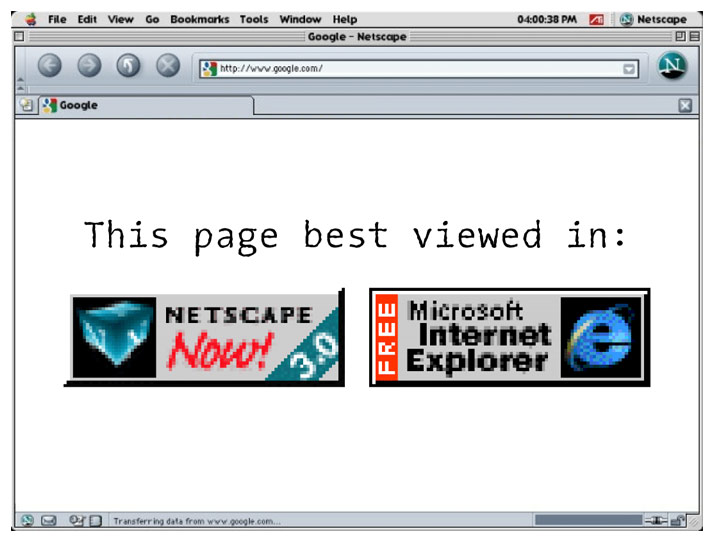The first browser war was waged between Microsoft and Netscape.
At that time, Netscape Navigator was the most widely used web browser. But when Microsoft gained the licensed Mosaic to create Internet Explorer 1.0, the company started shipping it as part of the Microsoft Windows 95 Plus! pack
Three months later, Microsoft launched Internet Explorer 2.0.
Unlike Netscape Navigator, the browser was available to all Windows users free of charge. Netscape saw this as a competition, and started to rapidly release new features, including Netscape's JavaScript, proprietary HTML tags and more. Microsoft subsequently replicated some of Navigator's features, and also created some new ones on its own.
Both Microsoft and Netscape were competing for dominance in the usage of web browsers.
Both web browsers began to approach feature parity in 1996, when the market was seeing the first commercial uses of Cascading Style Sheets (CSS) implementations.
It was during this time that the web developers' ecosystem was divided.

At this time, it was common for web designers to display 'best viewed in Netscape' or 'best viewed in Internet Explorer' logos.
These images often identified a specific browser version and were commonly linked to a source from which the stated browser could be downloaded.
These logos generally recognized the divergence between the standards supported by the browsers and signified which browser was used for testing the pages.
In response, supporters of the principle that websites should be compliant with World Wide Web Consortium (W3C) standards and hence viewable with any browser started the "Viewable With Any Browser" campaign, which employed its own logo similar to the partisan ones.
During this time, the internet had 12.8 million hosts with about 500,000 World Wide Web websites.
Browser wars continued, even when Microsoft saw the decline in the number of Internet Explorer users, and when other browsers including Firefox, Google Chrome, Safari, and Opera, were entering the alluring market.
